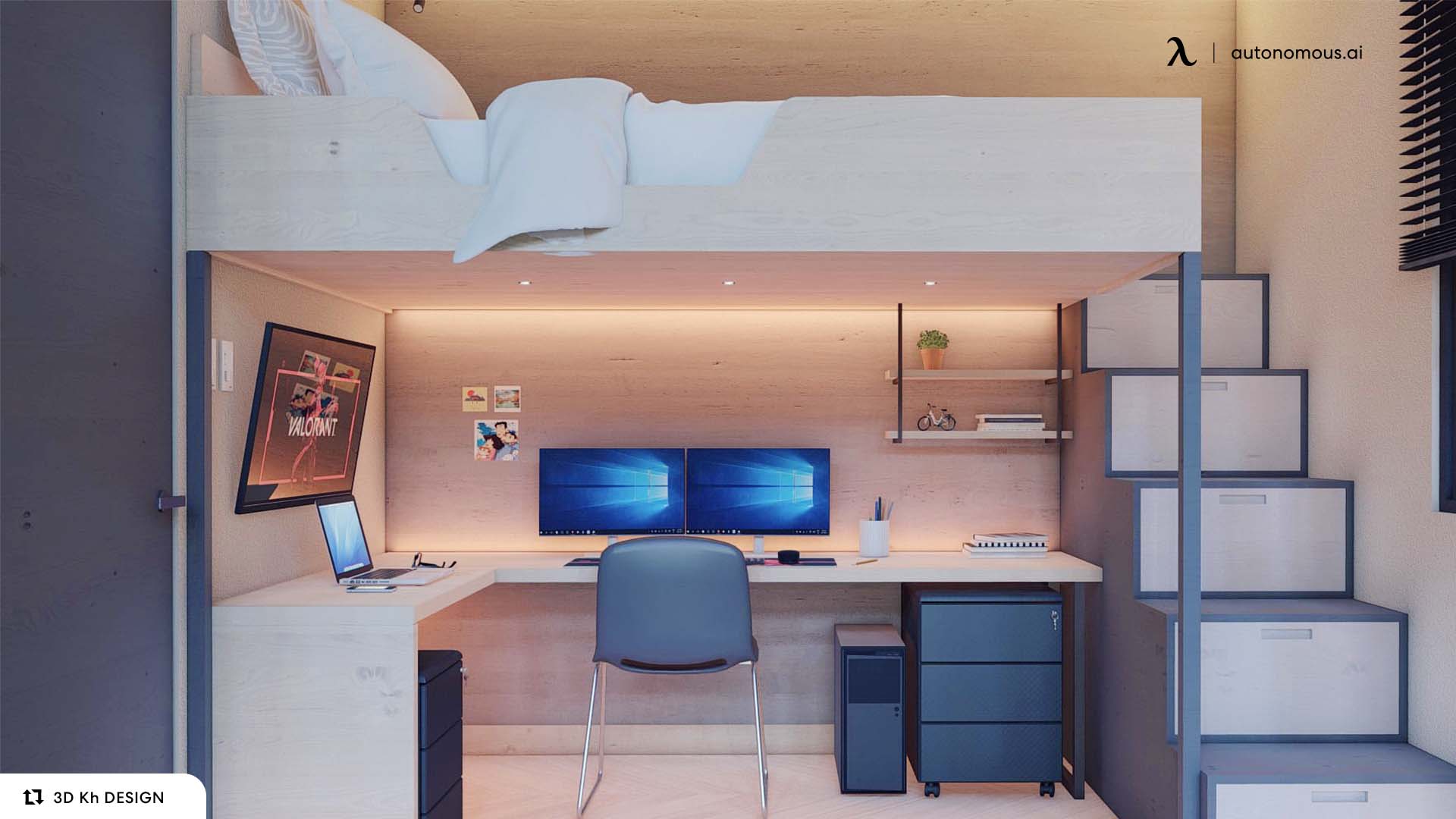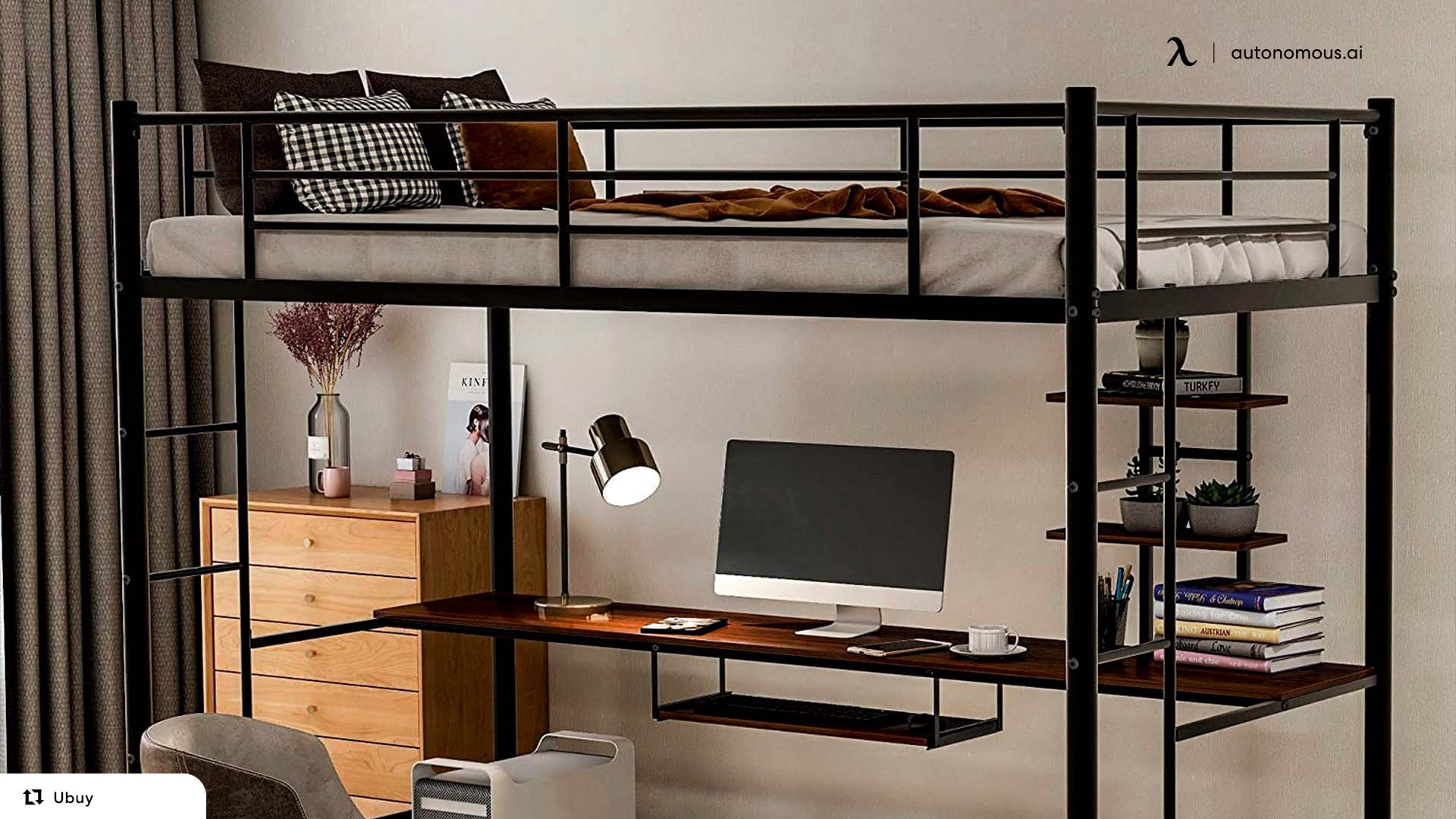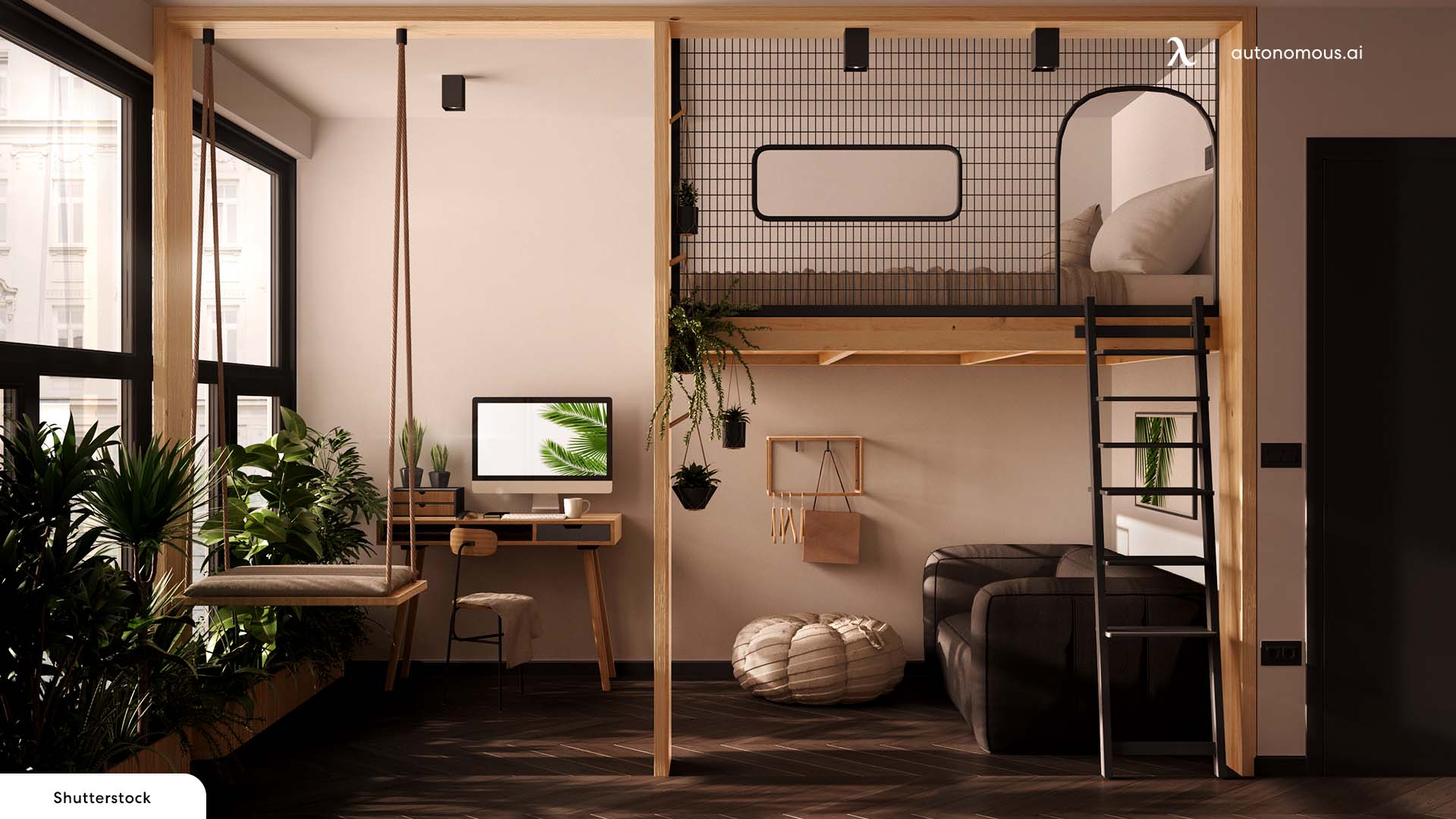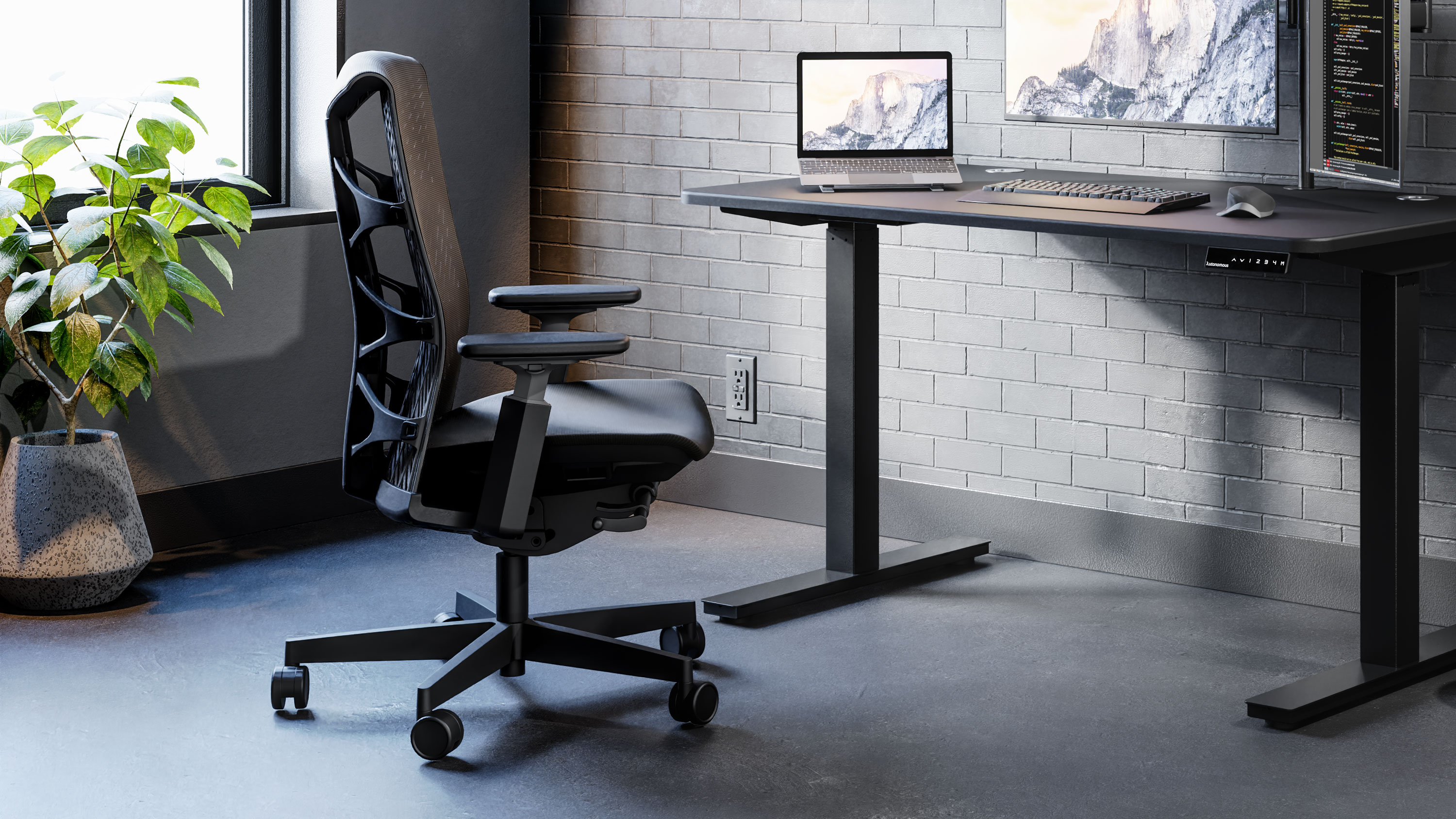
Setting Up an Ergonomic Workspace with a Computer Desk Bunk Bed
Table of Contents
A computer desk bunk bed offers a space-saving solution that combines a bed and a desk, making it ideal for adults who need a functional home office setup. In this article, we'll guide you on setting up an ergonomic workspace with a computer desk bunk bed, ensuring comfort and productivity.
Why Choose a Bunk Bed with Desk for Adults?
A bunk bed with desk for adults maximizes vertical space, allowing you to create a multifunctional area in a compact room. This furniture piece is perfect for small apartments, dorms, or any room where space is limited.
Key Considerations for Setting Up Your Workspace
1. Choosing the Right Bunk Bed Office Combo
Look for a desk bunk bed combo that suits your needs. Consider factors such as the size of the desk, storage options, and the overall dimensions of the bunk bed. Ensure that the desk area is spacious enough to accommodate your computer, monitor, and other work essentials.
2. Ergonomic Desk Setup
Monitor Height: Position your monitor at eye level to reduce neck strain. You can use a monitor stand or adjustable monitor arm to achieve the perfect height.
Keyboard and Mouse Placement: Your keyboard and mouse should be at a height where your elbows are at a 90-degree angle. This setup helps maintain proper posture and reduces the risk of repetitive strain injuries.
Chair Selection: Choose a comfortable, ergonomic chair that provides adequate lumbar support. Ensure that the chair height allows your feet to rest flat on the ground or on a footrest.
3. Lighting and Environment
Natural Light: If possible, place your computer desk bed near a window to benefit from natural light. Proper lighting can reduce eye strain and boost productivity.
Artificial Lighting: Use a desk lamp with adjustable brightness to ensure your workspace is well-lit. Avoid harsh, direct light that can cause glare on your screen.
Noise Control: If your workspace is in a shared room, consider using noise-canceling headphones or soundproofing materials to minimize distractions.

Bunk Bed with Desk Dimensions
When DIY bunk bed with desk, it's essential to consider the dimensions to ensure it fits well within your space. Here's a table outlining the dimensions of some popular models of bunk beds with desks:
| Bed Dimensions (L x W x H) | Desk Dimensions (L x W) | Total Height (H) | Additional Features |
|---|---|---|---|
| 80" x 57.5" x 72" | 55" x 15.5" | 72" | Shelves, ladder, full-size bed |
| 78.1" x 42.5" x 63" | 40" x 20" | 63" | Ladder, safety rails, twin-size bed |
| 79" x 42" x 71" | 59" x 18" | 71" | Sturdy frame, twin-size bed, open desk |
| 78" x 42" x 66.6" | 57" x 18" | 66.6" | Storage drawers, twin-size bed |
| 81.5" x 54.25" x 65" | 52" x 15" | 65" | Shelves, ladder, full-size bed |
Step-by-Step Guide to Setting Up Your Ergonomic Workspace
1. Position the Desk and Bed
To establish an ergonomic workspace that enhances both comfort and productivity, the initial step involves meticulously assembling the bunk bed with an integrated desk designed for adults, ensuring strict adherence to the manufacturer’s detailed instructions to guarantee a stable and securely fastened structure.
Strategically positioning the desk and bed unit in a location that maximizes natural light exposure and offers a pleasant view, if feasible, is essential, while also ensuring there is ample clearance around the desk area to facilitate movement and easy access to storage.
2. Set Up Your Desk Equipment
Setting up your desk equipment involves arranging the monitor, keyboard, mouse, and other essential items on the desk, utilizing stands or mounts to elevate the monitor to eye level, and positioning the keyboard and mouse at an ergonomically suitable height.
3. Organize Cables and Accessories
For maintaining a tidy workspace, employ cable management solutions to organize cables and accessories, and arrange storage items such as pens, notebooks, and office supplies in designated drawers or on shelves.
4. Optimize Lighting and Comfort
Optimizing lighting and comfort entails adjusting the lighting to ensure the workspace is adequately illuminated without causing screen glare, setting up an ergonomic chair, and making any final adjustments to enhance overall comfort.
Standing Desk and Ergonomic Chair in a Bunk Bed Desk Setup
Creating a functional and ergonomic workspace within the limited space of a computer desk bunk bed setup can significantly enhance your productivity and comfort. Integrating a standing desk and ergonomic chair into this setup requires careful planning and smart use of space. Here’s how you can effectively implement these elements:
Select a Convertible Standing Desk:
Opt for a height-adjustable desk converter that can be placed on the existing desk surface. This allows you to switch between sitting and standing positions easily.
Verify that the desk converter fits within the dimensions of the bunk bed's desk surface. Accurately measure the desk area to ensure the converter will fit comfortably without overhang.
Position the Desk Converter:
Once you have the appropriate desk converter, place it securely on the desk surface of the bunk bed. Adjust the height of the converter so that, when you are standing, your elbows form a 90-degree angle, and the monitor is positioned at eye level. This setup minimizes strain on your neck and shoulders.
Ensure that the desk converter provides sufficient space for your monitor, keyboard, and mouse. Stability is key; make sure the converter is secure and does not wobble during use.
Set Up Your Ergonomic Chair:
Select an ergonomic chair that offers adjustable height, lumbar support, and armrests. These features are crucial for maintaining proper posture and comfort during prolonged periods of sitting.
Adjust the height of the chair so that your feet rest flat on the ground and your knees are bent at a 90-degree angle. The armrests should be set at a level where your arms are supported comfortably, allowing your shoulders to remain relaxed and preventing hunching.
This comprehensive approach ensures that your workspace is ergonomic, promoting both comfort and productivity.

FAQs
1. Can I use any bunk bed with a desk for a standing desk setup?
While many bunk beds with desks can accommodate a standing desk setup, it’s essential to choose a model with sufficient desk space and clearance height. Ensure the desk surface is sturdy enough to support a desk converter and other equipment.
2. What is the ideal height for a standing desk converter?
The ideal height for a standing desk converter allows your elbows to be at a 90-degree angle when typing, with the monitor at eye level. Adjustable desk converters can help achieve the perfect height for both sitting and standing positions.
3. How do I ensure my ergonomic chair fits under the desk of a bunk bed?
Measure the clearance height under the desk of the bunk bed to ensure your ergonomic chair can fit comfortably. Look for chairs with adjustable height to accommodate different desk heights and provide proper support.
4. What features should I look for in an ergonomic chair for a bunk bed desk setup?
An ergonomic chair should have adjustable height, lumbar support, and adjustable armrests. These features help maintain good posture and reduce strain during long work sessions.
5. How can I manage cables in a compact bunk bed desk setup?
Use cable ties, clips, or a cable management tray to organize and secure cables. Keep cables out of the way to maintain a clean and clutter-free workspace, which can help improve focus and efficiency.
6. Is natural light important for a bunk bed desk setup?
Yes, natural light can reduce eye strain and boost productivity. If possible, place your desk near a window. Additionally, use adjustable artificial lighting to ensure your workspace is well-lit, especially during evenings or in low-light conditions.
7. Can I add additional storage to a bunk bed desk setup?
Many bunk bed desks come with built-in storage options such as shelves and drawers. If more storage is needed, consider adding under-desk organizers, wall-mounted shelves, or small storage units that fit within the desk area.
8. How do I switch between sitting and standing positions in a small space?
A height-adjustable desk converter allows you to easily switch between sitting and standing positions. Ensure there is enough space around the desk to accommodate the chair when it’s not in use and to move freely when standing.
Conclusion
Setting up an ergonomic workspace with a computer desk bunk bed can transform a small room into a functional and efficient home office. Choosing the right bunk bed office combo, arranging your desk ergonomically, and optimizing your environment, you can create a comfortable and productive workspace. Embrace the benefits of a bunk bed with desk for adults and enjoy the perfect blend of functionality and space-saving design.
Get exclusive rewards
for your first Autonomous blog subscription.
Spread the word
You May Also Like






-7512dd9e-3510-42ed-92df-b8d735ea14ce.svg)


